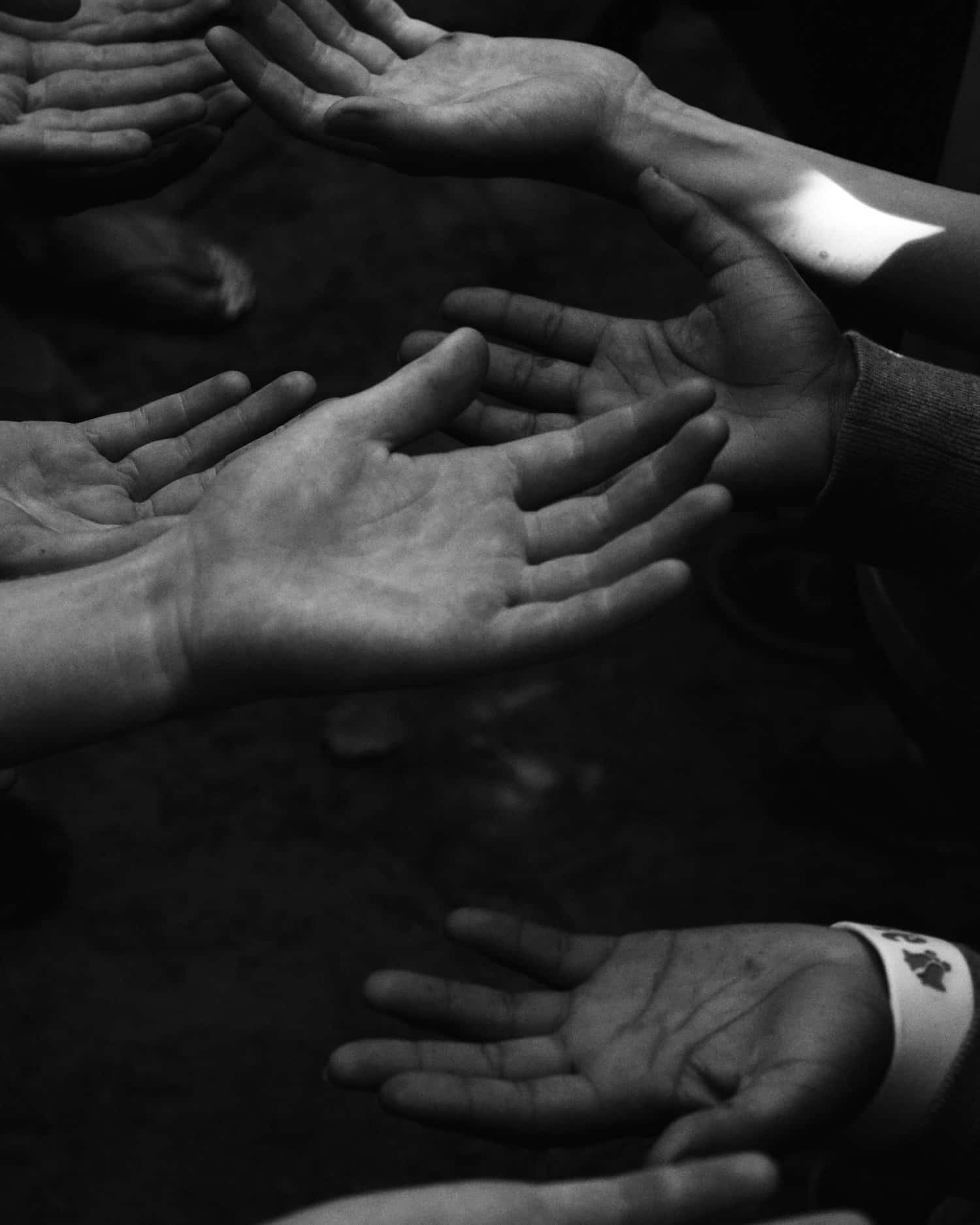Let’s be real for a second, sometimes life does not care about your coping skills. You might be carrying family history, old scars, or what feels like an entire community’s pain, and the world will still expect you to “deal.” That’s where DBT comes in.
Dialectical Behavior Therapy (DBT) isn’t just another therapy acronym. It’s a set of tools built for real people dealing with overwhelming emotions, intense relationships, or even trauma that goes way, way back. If you’ve ever been told you’re “too much” or felt like you had to hold it together for everyone else, DBT meets you right there, no performance required.
This journey isn’t about chasing perfection. It’s about learning to show up for yourself, even when things feel messy, complicated, or downright unfair. DBT is here to offer self-compassion, practical skills, and, yes, a little hope. Ready to see what’s possible when you don’t have to hide?
Understanding DBT as a Pathway to Self-Compassion and Change
Maybe you’ve heard of “DBT,” but it sounded like something reserved for hospitals or a specific diagnosis. In truth, DBT is bigger than a label, it’s an approach rooted in honoring your humanity, especially when you feel misunderstood or exhausted by the grind of everyday life.
At its core, DBT is about creating space between where you are and where you want to be, and showing kindness to yourself while you bridge that gap. It values both survival and transformation, teaching practical skills for navigating big feelings, relationships, and the systems we live in.
DBT doesn’t expect you to become a different person overnight. Instead, it offers time-tested tools to help you accept things you cannot change, while still claiming your right to evolve, heal, and take up space. Whether you’re brand new to therapy or tired of “therapy speak,” this section will make DBT accessible, shining light on its meaning, history, and why it just might change the way you relate to yourself and the world.
What Is DBT? Defining Dialectical Behavior Therapy in Human Terms
Dialectical Behavior Therapy, let’s break that down without the psych jargon. “Dialectical” just means holding two truths at once. Think: “I’m doing the best I can and I want to do better.” In real life, this looks like letting yourself feel what’s real, while still believing change is possible.
DBT is a type of behavioral therapy that teaches you to manage emotions, face hard moments without running or lashing out, and build stronger relationships. It doesn’t ask you to get rid of your sensitivity; it helps you use it as a strength. The approach blends acceptance (making space for your current reality) with change (actively building new ways to cope, communicate, and nurture yourself).
If you’ve ever felt like therapy wasn’t built with your story in mind, maybe because of your background, culture, or the complexity of your emotions, DBT flips that script. The skills are concrete, the support is active, and the aim is always self-compassion paired with real-world action. Simply put, DBT is about learning to live bravely, even when the storm inside and outside feels like too much to handle.
DBT History: How One Woman’s Vision Sparked a Revolution in Therapy
DBT was born out of necessity. Dr. Marsha Linehan, a psychologist who understood both deep emotional pain and the limits of traditional research, created DBT in the late 1980s. She saw that many people, especially those living with borderline personality disorder, were not just being overlooked in therapy, but sometimes harmed by systems that judged their reactions.
Linehan designed DBT to be both radical and practical, making space for those whose suffering was dismissed as “too much.” Over time, her vision turned DBT into one of the most respected, and researched, treatments for big emotions, trauma, and the daily messiness that comes with being human. Her legacy continues in every session where safety, empathy, and skill-building are honored.
How DBT Treatment Is Structured: Individual Sessions, Groups, and More
If the word “therapy” makes you picture a couch and endless talking, DBT is going to surprise you. Instead of one-size-fits-all, DBT brings together different kinds of sessions designed to meet you wherever you’re at in life. The structure is both a safety net and a training gym for your emotional muscles.
DBT treatment often includes one-on-one time with a therapist who gets your real struggles, not just what’s in a manual. But there’s more: you also spend time in group skills classes where you learn (and actually practice) tools designed for real, daily stress, not just “crises.”
What really sets DBT apart isn’t just the skills or the structure, it’s the understanding that healing is not always a straight line. It’s okay to show up how you are, and the format can flex with your schedule, energy, and needs. Whether you’re juggling work, caregiving, or community expectations, DBT is about helping you build a life that fits you, not the other way around.
DBT Sessions: What to Expect in Weekly Therapy and Skills Groups
DBT isn’t just sitting across from a therapist once a week pouring your heart out. Yes, there are individual sessions, these are where you break things down, set goals, and troubleshoot what’s not working. But you also attend DBT skills groups each week.
Now, don’t let the word “group” scare you off. DBT groups aren’t about sharing your life story with strangers, unless you want to. They’re practical classes where you actually learn and practice skills, things like mindfulness, stress management, or setting boundaries. The vibe is judgment-free, and everyone is there to build something real for themselves, at their own pace.
Both types of sessions are built on safety and respect. In individual sessions, your therapist checks in on your goals, helps you apply DBT tools to your unique situations, and supports you as you navigate setbacks. In skills group, you practice together, learn from each other, and realize you’re not as alone as you thought. No performance, no pretending, it’s about growth, not perfection.
If you’re curious about whether DBT programs are offered near you, or want a deeper sense of what this might feel like, you can check service options here.
How Long Are DBT Sessions and How Much Time Do You Commit?
DBT asks for a real commitment, but that doesn’t mean it eats up your whole life. Most individual therapy sessions run about 45 to 60 minutes. Skills groups usually run a bit longer, often around 90 minutes once a week.
Comprehensive DBT programs often last about six months to a year, sometimes more depending on your needs. Plain and simple: it’s a steady, ongoing investment in your wellbeing, not a quick fix. You show up, learn, practice, and rest, knowing it’s about progress, not burnout. Most folks start seeing benefits even before the finish line, and you tailor your pace as you go.
DBT Group Therapy: Why Community Healing Matters
Group therapy in DBT isn’t just about talking or sharing feelings. It’s a space to practice skills in community, to see that other folks struggle too, and that there’s nothing “broken” about needing support. In a world that rewards going it alone, group skills training is a quiet rebellion.
In these groups, you’re not expected to become best friends. But learning new skills together helps you feel seen and supported, even if you’d rather blend into the background sometimes. For many, DBT group is the first taste of healing that comes from not having to carry it all solo. You can learn more about building community care in mental health here.

Exploring the Four Pillars of DBT Skills Training
So, what do you actually learn in DBT? Forget abstract psychology concepts, DBT is rooted in four essential skill sets that make life with strong emotions and hard histories a little more doable. These core skills aren’t just things to memorize; they’re tools to practice in your real world, right alongside whatever you’re carrying.
Think of these skill sets, mindfulness, distress tolerance, emotion regulation, and interpersonal effectiveness, as pillars holding up a bridge between surviving and thriving. DBT doesn’t just teach you “how to cope.” It shows you how to carve out moments of peace, handle storms, and claim relationships that actually nourish you.
Each pillar is designed to meet you exactly where you are, whether you’re new to therapy or just tired of being judged for your feelings. You’ll find yourself slowly learning not just to survive, but maybe, just maybe, to feel at home inside your own life.
Mindfulness in DBT: Finding Solid Ground Amid the Noise
In DBT, mindfulness is the root, think of it as the anchor when life starts pulling you in a hundred directions. Mindfulness in DBT doesn’t mean you become a monk or ignore the world. It’s about noticing what’s happening right now, your thoughts, your breath, the facts of a situation, without judging yourself or hustling to fix it all at once.
For folks who grew up having to read every room, braced for the next thing to go wrong, mindfulness can be both a relief and a challenge. You learn to pause, just for a second, and check in: “What am I actually feeling? What do I need right now?” Even five quiet seconds can break the cycle of rushing, numbing, or blaming yourself.
DBT gives you small, practical exercises for grounding, noticing your senses, breathing on purpose, even just feeling your feet on the floor. It’s not about blocking out pain or pretending things are okay. It’s about letting yourself exist, fully, in the present, because your pain and your power both live here, not in the past or future.
Distress Tolerance Skills: Navigating Crisis Without Losing Yourself
Distress tolerance skills are your survival kit for the moments when it all feels “too much.” DBT knows there will be days when you want to escape, numb out, or go back to old habits because everything hurts. Here, you get tools to ride out intense waves of emotion, without hurting yourself, someone else, or your future.
You may be offered practical strategies: holding ice to ground yourself, making crisis plans, or learning to self-soothe with familiar comforts. For folks facing extra layers of stress, from discrimination to day-to-day grind, these skills are a quietly radical way to say, “I can get through this. I’m allowed to just survive today.”
Emotion Regulation: Learning to Live With Feelings That Feel Too Big
Some of us have heard “you’re too sensitive” one too many times, and after a while, it sticks. DBT flips that story. Emotion regulation skills help you make room for your feelings, no shame, no hiding, while also learning not to get completely swept away when emotions surge.
Managing intense emotions isn’t about shutting them down. DBT teaches you to identify what you’re feeling, name it out loud (even if only to yourself), and understand what triggers these waves. When you know your emotional patterns, you can start to interrupt them with small, real actions, like pausing, asking for a break, or choosing a healthier way to respond.
These tools matter for anyone who’s had to stuff down feelings to survive, whether from family rules, culture, or just the grind of hustling every day. In DBT, your feelings are signals, not stop signs or curses. You learn to ride the highs and lows without losing yourself, practicing compassion as you go.
Interpersonal Effectiveness: Building Boundaries and Braver Connections
Interpersonal effectiveness sounds fancy, but it’s about life’s hardest thing: speaking your truth, setting boundaries, and asking for what you need, without losing yourself in the process. DBT teaches you communication tools for standing up for yourself and building relationships rooted in honesty and respect.
If you’ve ever been the “fixer,” code-switcher, or quiet peacemaker in your family or community, these skills can feel both brand new and deeply overdue. You learn to say no, ask for help, express how you feel, and negotiate needs without guilt or apology.
It’s not just about asserting yourself, it’s about unlearning the idea that your needs are “too much” or that you only belong if you’re accommodating everyone else. In DBT, boundaries are an act of self-love. Building braver connections means letting your guard down just enough to let something real, and mutual, grow. Sometimes, that means learning new language for what you need, especially if your identity or culture made self-advocacy feel dangerous before. You can dive deeper into identities and boundaries here.
DBT vs CBT: Choosing the Right Therapy for Your Unique Story
The therapy world loves its acronyms, but behind the letters are real differences that matter for real people, especially when life has left you tender, angry, or tired. DBT and CBT (Cognitive Behavioral Therapy) are both evidence-based and practical, but their vibes, values, and best-fit audiences aren’t the same.
CBT is often about challenging unhelpful thoughts and building healthier behaviors. DBT takes that one step deeper. It focuses on holding the tension between validating your emotions (“Of course you feel this way”) and changing what’s not working (“Let’s build something new”). For those who crave not just symptom reduction, but the dignity of having their lived experience honored, DBT can feel like a much-needed breath of fresh air.
You don’t have to fit yourself into a therapy box. At its best, DBT meets your whole story, your culture, your identity, your need for both rest and resilience. If you’re dying to know more about different therapy approaches or how to find one that fits you, check out our overall approach here.
Acceptance and Change Techniques in DBT: Finding Balance, Not Perfection
DBT’s magic lies in its balance: you’re allowed to accept yourself completely, and still want to change things for the better. This isn’t just self-help talk. “Acceptance techniques” include radical acceptance, facing reality as it is, instead of as you wish it were, no sugarcoating. Sometimes, that means recognizing pain, oppression, or struggle for what it is, without blaming yourself for it.
On the other hand, DBT gives you “change techniques”, real strategies to tweak how you think, react, or care for yourself. You might learn how to problem-solve a toxic job situation or gently shift the way you respond to family drama. The key? You don’t have to choose one side or the other; you practice holding both.
This flexibility is what makes DBT stand out. Healing here is not a straight arrow; it’s a rhythm: accept, adapt, rest, repeat. DBT encourages you to take things as they are and also reach for new ways to show up. You don’t have to become “better” first, you get to be you, right now, and still heal.
What Conditions Does DBT Treat and How Effective Is It?
There’s a lot of mythology out there about DBT, mostly that it’s reserved for “difficult” or “untreatable” cases. In truth, DBT has roots in working with folks who’ve felt let down or pathologized by the system, but its benefits stretch far beyond one label or diagnosis.
DBT is especially effective for conditions marked by intense emotions and hard-to-break cycles, things like borderline personality disorder, self-harm, suicidal thoughts, and trauma rooted in injustice or stigma. But research and real-world experience show DBT can also help with depression, anxiety, eating disorders, PTSD, substance use, and more.
If you’re skeptical about “evidence-based” anything, you’re not alone. DBT isn’t magic, and it’s not a cure-all. But it does have decades of studies, survivor wisdom, and therapist insight behind it. Whether you want numbers, personal stories, or just a sense of what’s possible, the next sections give you both data and a lived reality check, because you deserve therapy that’s not just effective, but relevant to you.
DBT for Borderline Personality Disorder: A Gold Standard of Care
DBT made its name as a lifesaving treatment for borderline personality disorder (BPD): a diagnosis too often wrapped in stigma and misunderstanding. For folks navigating BPD, where emotions swing hard, relationships get tangled, and the urge to escape pain is strong, DBT offers hope, structure, and a real path out of crisis.
What makes DBT so powerful for BPD is its whole-person approach: safety always comes first, validation is never in short supply, and the skills taught are both practical and deeply compassionate. DBT has become the gold standard for BPD, not just because of clinical trials, but because it centers dignity, connection, and the possibility of lasting change.
DBT Effectiveness: What Science and Lived Experience Reveal
DBT isn’t just a theory, decades of research back it up. Studies show DBT can cut self-harm and suicide attempts by half or more for those at highest risk. For BPD, DBT is widely recognized as the most effective treatment, but clinical trials also support its benefits for depression, trauma, and substance use.
Lived experience matters too. Many people, especially those who haven’t fit into traditional therapy boxes, report DBT as the first place they felt understood and empowered. Real progress is about more than symptom checklists; it’s about owning your healing and seeing life open up again, on your terms.
Accessing DBT: Finding Your Community, Understanding Cost, and Self-Guided Options
So, what if you’re ready for DBT but the system feels complicated, or you’re worried about cost, access, or where you fit in? Here’s the unvarnished truth: finding a DBT therapist can take some legwork, whether you’re looking locally or online. But you’re not stuck; options exist, and your healing isn’t limited by someone else’s blueprint.
Start by searching for licensed, culturally aware DBT therapists in your area, or explore online therapy if in-person doesn’t work for your schedule or life. Insurance might cover part (or all) of DBT, but sliding scale or community clinic programs can also make it more accessible. The barriers are real, but so are the pathways through them.
If one-on-one therapy isn’t possible, you don’t have to wait. Apps, books, and online communities can help you practice DBT skills in your own time, with or without formal support. If you want to keep exploring what service options are available, you can check here. Remember: you deserve support, rest, and tools that meet you where you’re at, not shame or hustle.
DBT Cost: Navigating Insurance, Sliding Scales, and Value
Money is real, and DBT’s cost can range depending on where, how, and with whom you work. Many private therapists and group programs accept insurance, or can help you submit superbills for out-of-network reimbursement. If insurance isn’t an option, ask about sliding scale fees, some programs adjust rates based on income, making therapy more accessible.
Don’t be afraid to ask up front about costs, payment plans, or community options. Investing in DBT is an investment in your peace and future, which means you deserve transparency at every step. For details on DBT offerings, check this page.
DBT Self-Help: Can You Practice Skills on Your Own?
- Workbooks and Books: Look for reputable sources on DBT skills, like “The Dialectical Behavior Therapy Skills Workbook” by McKay and colleagues. Many are designed for personal use, not just therapists.
- DBT Apps: There are apps for tracking emotions, practicing mindfulness, and creating virtual diary cards. Try options like “DBT Self-Help” or “DBT Diary Card and Skills Coach” to reinforce learning between sessions.
- Online Resources: Websites, YouTube channels, and forums offer free or low-cost DBT skills lessons and guided exercises, especially for marginalized folks seeking identity-affirming support.
- Peer-Led Support Groups: Some community groups (in-person or virtual) use DBT skills and can help you practice in safe, affirming spaces.
- Remember: Some DBT skills are easier with support, but you’re always allowed to start where you are, take what works, and leave the rest. Agency is always yours.




